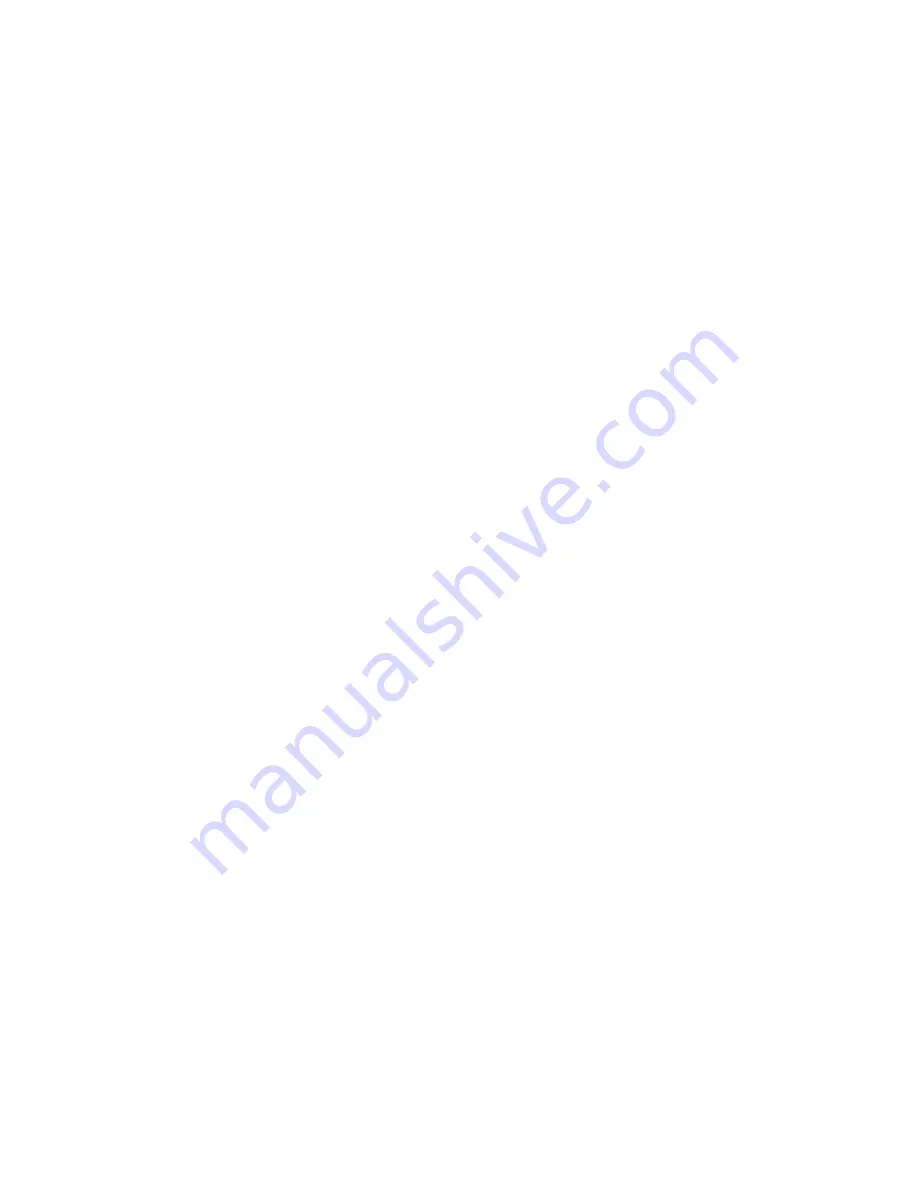
33
Fire stop manufacturers are Air-Jet, American Metal
Products, Metal-Fab, and Simpson Dura-Vent.
11. Whenever possible install vent straight through roof.
Refer to Figure 16 if offset is necessary. Maintain
minimum clearance to combustible materials.
12.
Install Vent Terminal.
a. Size roof opening to maintain minimum clear-
ance from combustible materials.
b. Use appropriately designed vent fl ashing when
passing through roofs. Follow fl ashing manufac-
turers’ instructions for installation procedures.
Flashing manufacturers are Air-Jet, American
Metal Products, Metal Fab, and Simpson Dura-
Vent.
c. Extend vent pipe to maintain minimum vertical
and horizontal distance of twelve (12) inches
from roof surface. Allow additional vertical
distance for expected snow accumulation.
Provide brace as required. Refer to Figure 18.
d. Vertical venting requires fl ashing and a storm
collar to prevent moisture from entering the
structure.
e. Install storm collar on vent pipe immediately
above fl ashing. Apply Dow Corning Silastic 732
RTV Sealant between vent pipe and storm collar
to provide weathertight seal.
f. Attach vent terminal.
13. Install 90° aluminum elbow from kit onto collar of
burner enclosure inside jacket assembly. See Figure
19.
NOTE: RV3-RV4 uses 3 inch aluminum 90° elbow.
RV5-RV7 uses 4 inch aluminum 90° elbow.
14. Secure 90° aluminum elbow to burner enclosure
collar and seal with RTV.
15. Insert protective cover into air intake opening in
jacket top panel. See Figure 19.
NOTE: RV3-RV4 uses 4 inch cap
RV5-RV7 uses 5 inch cap
1. Do not exceed maximum vent length. Refer to
Table 4.
Horizontal
–
2. Maintain minimum ¼ inch per foot slope in horizon-
tal runs.
3 Recommended horizontal installation consists of
vent being sloped down toward boiler. See Figure
15.
4. Use appropriately designed thimbles when passing
through combustible walls (thimble use optional for
noncombustible walls). Insert thimble through wall
from outside. Secure outside fl ange to wall with
nails or screws, and seal with sealant material.
Install inside fl ange to inside wall, secure with nails
or screws, and seal with sealant material.
5. For noncombustible wall application when thimble
is not used, size opening such that female (bell) end
with locking band attached cannot pass through.
6. Join vent terminal to vent pipe. Locate vent
terminal between six (6) inches and twenty-four (24)
inches from wall when joined to inside vent piping.
See Figure 17.
7. Insert vent pipe through thimble/opening from
outside and join to vent system. Apply sealant
between vent pipe and opening/thimble to provide
weathertight seal.
8. Join vent terminal to 45° elbow included in kit. Join
45° elbow/terminal assembly to vent pipe. Refer to
Sections C through E for proper procedures for
joining vent pipe and fi ttings.. See Figures 3 (A, B,
C and D).
Vertical
–
9. Slope horizontal runs minimum ¼ inch per foot.
Slope down towards boiler.
10. Install fi re stops where vent passes through fl oors,
ceilings or framed walls. The fi re stop must close
the opening between the vent pipe and the structure.
Summary of Contents for Burnham Hydronics Revolution RV3
Page 5: ...5 Figure 2 Dimensions...
Page 15: ...15 Figure 4 Recommended Separate Horizontal Vent Air Intake Installation...
Page 16: ...16 Figure 5 Separate Horizontal Vent Air Intake Terminal Confi guration...
Page 19: ...19 Figure 7 Attic Offset Figure 6 Vertical Vent Installation...
Page 21: ...21 Figure 9 Vertical Air Intake Piping...
Page 24: ...24 Figure 10 Combination Horizontal Vent Air Installation...
Page 25: ...25 Figure 11 Combination Horizontal Vent Air Terminal Installation...
Page 30: ...30 Figure 13 Combination Vertical Air Intake Terminal Assembly...
Page 31: ...31 Figure 14 Combination Vertical Vent Disc Terminal Assembly...
Page 34: ...34 Figure 15 Indoor Air Horizontal Vent Installation...
Page 35: ...35 Figure 16 Indoor Air Vertical Vent Installation...
Page 37: ...37 Figure 19 Indoor Air Air Intake Terminal Installation...
Page 46: ...46 Figure 28 Recommended Boiler Piping For Circulator Zoned Heating Systems...
Page 47: ...47 Figure 29 Boiler Piping for Zone Valve Zoned Systems...
Page 52: ...52 Figure 31 Internal Boiler Wiring Schematic Diagram...
Page 56: ...56 Figure 33 Single Heating Zone Only Wiring Schematic...
Page 58: ...58 Figure 35 Circulator Zoned System Wiring Schematic...
Page 59: ...59 Figure 36 Zone Valve Zoned System Wiring Schematic...
Page 60: ...60 Figure 37 Zone Valve Zoned System Wiring Schematic...
Page 61: ...61 Figure 38 Different Manufacturer s Zone Valve Connections to Honeywell R8889...
Page 62: ...62 Figure 39 Circulator Zoning with EC5000 Wiring Schematic...
Page 63: ...63 Figure 40 Zone Valve Zoning with EC5000 Wiring Schematic...
Page 64: ...64 Figure 41 Radiant Floor Circulator Zoned System with Alliance Water Heater...
Page 65: ...65 Figure 42 Radiant Floor Zone Valve Zoned System with Alliance Water Heater...
Page 68: ...68 Figure 43 Modular Boiler Piping...
Page 69: ...69 Figure 44 Alternate Modular Boiler Piping...
Page 71: ...71 Figure 45 Operating Instructions...
Page 77: ...77 Figure 53 Cleaning Boiler Flue Passages...
Page 80: ...80 Revolution Troubleshooting Tree...
Page 81: ...81 Revolution Troubleshooting Tree...
Page 84: ...84...
Page 86: ...86...
Page 88: ...88...
Page 90: ...90...
Page 92: ...92...
Page 95: ...95 SERVICE RECORD DATE SERVICE PERFORMED...
Page 96: ...96 SERVICE RECORD DATE SERVICE PERFORMED...






























